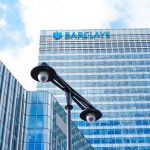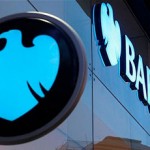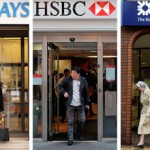Barclays gains Profit But Investment Banking Revenue declines

Barclays said on Wednesday that it had swung to a profit in the second quarter, but that it was hurt by lower revenue in its investment banking unit and by higher provisions for improperly sold insurance.
The British bank posted net income of 161 million pounds, or about $273 million, for the three months that ended June 30, ahead of analysts’ expectations, compared with a loss of £168 million a year earlier.
The bank set aside hundreds of millions of additional pounds in the quarter to compensate clients who were inappropriately sold payment protection insurance. It also said that the United States Department of Justice had extended until 2015 the period of review of the bank’s foreign-exchange activities as part of an an industrywide inquiry.
Barclays is in the middle of a massive restructuring, in which it plans to slash as many as 19,000 jobs over the next three years. The bank said that its headcount was at its lowest level since 2007 and that it had eliminated about 5,000 jobs so far this year.
“Structural cost reduction is vital to achieving strong returns, and we continue to make progress on reducing operating expenses while maintaining controls and improving customer and client experience,” Antony P. Jenkins, the Barclays chief executive, said.
For the six months ended June 30, profit from its continuing operations nearly doubled to £1.13 billion, up from £671 million in the prior year period.
On an adjusted pretax basis, the bank posted a first-half profit of £3.35 billion pounds, down from £3.59 billion in the period a year earlier.
In its investment bank, pretax profit declined by more than half, to £567 million in the second quarter, from £1.14 billion in the period a year earlier. Barclays is dramatically shrinking the size of its investment bank, where it will cut 7,000 jobs by 2016.
In the second quarter, the bank increased its provision for payment protection insurance claims by £900 million.
The insurance product has cost banks in Britain billions of dollars in compensation for consumers who were improperly sold the insurance.
Barclays is facing a variety of legal issues, including a lawsuit by New York Attorney General Eric T. Schneiderman over its private stock market, or dark pool.
In June, Mr. Schneiderman accused Barclays of favoring high-frequency traders over other investors in its dark pool, known as Barclays LX. Barclays has asked that the lawsuit be dismissed, saying Mr. Schneiderman overstepped his authority.
Deutsche Bank and UBS also are facing inquires from Mr. Schneiderman’s office regarding their dark pools.
In a conference call with journalists on Wednesday, Tushar Morzaria, the Barclays finance director, said that the volume of trading in its dark pool had increased after it briefly fell off following the filing of Mr. Schneiderman’s lawsuit and was up 42 percent in its most recent report.
Dark pools have grown in popularity in recent years, in part because they allow big investors, such as pension funds, to place orders privately, without alerting the rest of the market to their intentions.
Barclays also is currently subject to a non-prosecution agreement with the United States Department of Justice as part of a settlement with American and British authorities over manipulation of global benchmark interest rates by its employees. After two years, if Barclays refrained from any further misconduct, the company would avoid criminal prosecution.
But, Barclays, which agreed to pay $450 million as part of the settlement, said on Wednesday that the Justice Department has extended the period for the non prosecution agreement to 2015 as it conducts an industry-wide investigation into potential manipulation of the foreign exchange market. The extension will give the Justice Department until June 27, 2015, to determine whether Barclays trading activities constituted a “United States crime” under the terms of the agreement.
The bank’s common equity Tier 1 capital, a measure of its ability to absorb losses, rose to 9.9 percent at the end of the second quarter from 8.1 percent at the end of the year-earlier period.
European banks are required to have a minimum of 4 percent common equity Tier 1 capital under the so-called Basel III regulatory program, but larger banks are required to maintain a higher minimum capital level, which is set by regulators.
Source: NYT



























